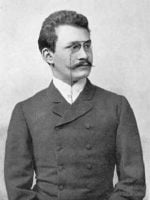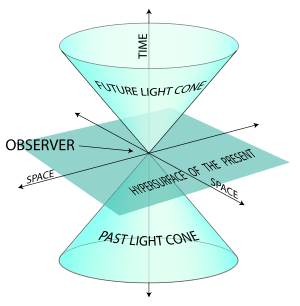And the life of Sarah was one hundred years and twenty years and seven years… (Gen. 23:1)
Why did Esther merit to rule over 127 countries? Said G‑d: “Let Esther, the descendant of Sarah who lived 127 years, come and rule over 127 lands. (Esther Rabbah 1:8)
The Midrash Ester Rabbah compares 127 years of Sarah’s life with 127 provinces that Esther ruled. How can one compare time with space? When the Midrash says that Adam gifted 70 years of his life to his descendant, King David, it’s understandable – a year for a year. But a year for a province? What’s the connection?

When, in 1905, Albert Einstein published his Special Theory of Relativity, it was nothing short of a scientific revolution. For the first time, Einstein showed that space and time are relative and interrelated. Later, his former professor, the Jewish mathematician Hermann Minkowski, combined space and time into a four-dimensional spacetime continuum that he called Die Welt – the World.
According to the Special Theory of Relativity, every object moves through time and space in a way that preserves the element of four-dimensional spacetime. That means that an object at rest moves only through time. And a photon that moves through space moves only in space but not through time. Consider the following diagram:
The vertical line on this diagram is time (t), the horizontal line is space (x). If an object is at rest, it moves only through the vertical line t (an object at rest has, by definition, zero displacement along the space line x). A photon traveling at the speed of light moves along the horizontal line x, but does not move through time – for the photon, time stops. Any object moving with speed less than a speed of light moves along the diagonal line.
An interesting point here is that time and space become interwoven and interchangeable – the more you move in space, the less you “move” in time, and vice versa. To achieve maximum velocity, the photon converts, as it were, its time into space. For the photon, time does not exist – it stops.
In the theory of relativity, time and space are… well, relative. It is easy to change one into another. This is particularly easy to understand from the point of view of four-dimensional Minkowski spacetime.
Kabbalah, however, combined time and space into a five-dimensional world much before Einstein and Minkowski did. Sefer Yetzirah, attributed to Abraham, states:
A depth of beginning, a depth of end; a depth of good, a depth of evil; a depth of above, a depth of below; a depth of east, a depth of west; a depth of north, a depth of south.” (Sefer Yetzirah 1:5)
In another place, Sefer Yetzirah again speaks of the universe as a five-dimensional construct: Olam (“world”-space) – Shanah (“year”-time) – Nefesh (“soul” spirituality), i.e., time-space-spirituality (Sefer Yetzirah, 6:4). One-dimensional time plus three-dimensional space plus one-dimensional spirituality equal five-dimensional temporal-physical-spiritual universe (see my post The Fifth Force).
This makes it easy to understand the Midrash relating the years of Sarah’s life with the provinces ruled by Esther. Should we call it Biblical Relativity?


Wow! Superb….